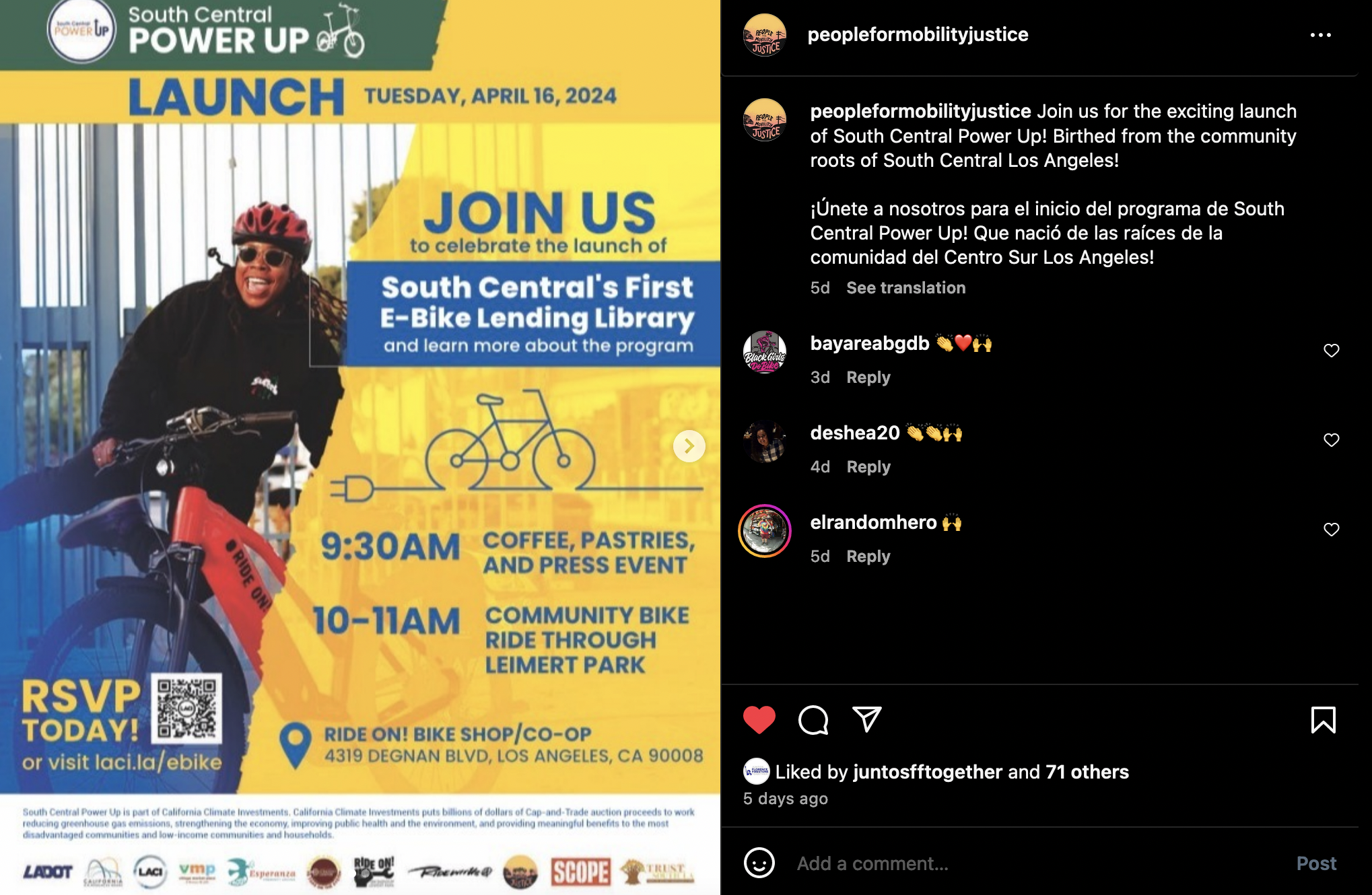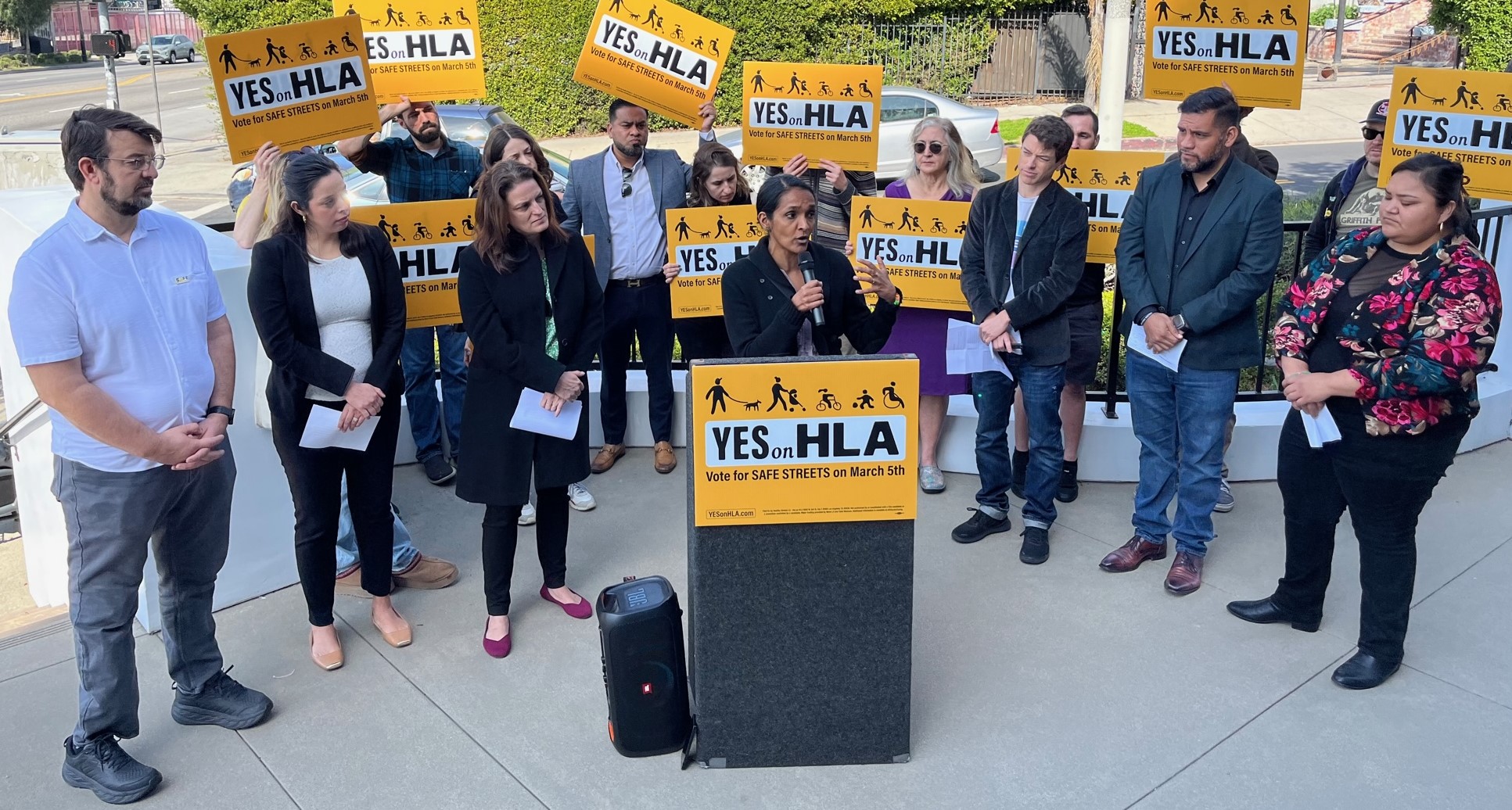It’s Past Time To Abandon the Argument That Crosswalks Make Streets More Dangerous
12:21 PM PDT on March 21, 2012
A video by Adam Choit has been making the round on the Internet this week making the case for a crosswalk installation somewhere between Gardner and Pointsettia Streets on Sunset Boulevard. There is no crosswalk between the two named streets on Sunset, creating well over a quarter of a mile of five lane road with no space set aside for pedestrian travel.
Viewing the video made Deborah Murphy's blood boil. Murphy is the founder of Los Angeles Walks and the long-serving chair of the city's pedestrian advisory committee.
" If streets only serve one function, to move vehicles, then we have wasted our money on investing in 6000 miles of single-purpose concrete and asphalt, when we could be investing in streets for people," she writes. "Isn't it ironic that one week we are cheering the success of a tiny piece of paradise at Sunset Blvd. and Griffith Park Blvd., the Sunset Triangle, yet only 5 miles west on Sunset Blvd and Gardner Street, people can't even cross the street without taking their lives in their hands."
Choit's video is mostly interviews with people walking the street with clips of people taking their lives into their own hands attempting to cross the street. Most annoyingly, when he contacted the Department of Transportation he received a letter outlining why they wouldn't consider a crosswalk anywhere in this three tenths of a mile stretch. In short, budget cuts, a lack of fatalities and crosswalks don't really make the street safer anyway.
Observations of pedestrian behavior and safety studies in cities throughout the world have produced evidence that suggests that pedestrians are more cautious when crossing at locations where crosswalks have not been painted. This extra caution is more effective in reducing the accident potential than marked lines and signs which offer no real protection from an oncoming vehicle. Therefor, in the interest in overall pedestrian safety, a marked crosswalk, as requested, is not approved at this time.
The letter from LADOT is dated 2010 and attitudes have changed at the Department in the last two years. However, the argument that crosswalks are dangerous is one we've heard before and originates from a widely debunked report that was written forty years ago. It's past time to put that argument to rest.
In 1972, a traffic engineer named Bruce Herms noted that there was a higher rate of pedestrian crashes at marked crosswalks in his study area than unmarked crosswalks. In California, and many other states, people can legally cross the street at any intersection regardless of whether there is paint on the ground. Herns goes on to assume that the difference in crash rates is related primarily to the existence of the crosswalk. He does this without providing any other evidence or an examination of other factors at these intersections.
Instead, Herns believes that the crosswalks create a "false sense of security." This statement about the "false sense of security" has appeared in many a rejected plea for a crosswalk, not just in Los Angeles, but throughout the country. LAPD likes to toss around this term when blaming the victims in a traffic crash. So do former assistant general managers at LADOT who authored their own report using the same methodology and came to the same conclusions as Herms in 1999.
One of the best rebuttals of Herms' thesis, the one grabbed by traffic officials throughout the country, was written as part of an undergraduate thesis and published by America Walks last month. It's a good read, and worth remembering the next time a city official tries to claim that crosswalks make streets dangerous.
But crosswalks don't just make streets safer. They also make streets better, especially in a city where being outside should be second nature because of the sunny weather.
"If we are to experience the City of Los Angeles as a place for living – a place for all of us to come together and have fun, a place for colleagues to go to lunch together, for families to join together for special celebrations, for businesses to succeed with vibrant activity along their shop windows, for neighborhoods to connect and for many other activities to take place. our streets need to become the lifeblood of our community. To do that, they need to be places where people feel safe and are safe." Murphy concludes.
Stay in touch
Sign up for our free newsletter
More from Streetsblog Los Angeles
Metro Looks to Approve Torrance C Line Extension Alignment
Selecting the relatively low-cost hybrid alternative should help the oft-delayed South Bay C Line extension move a step closer to reality
This Week In Livable Streets
CicLAvia returns to Venice Boulevard, Metro board committees, L.A. City Council Transportation Committee, Metro budget theater, and more




